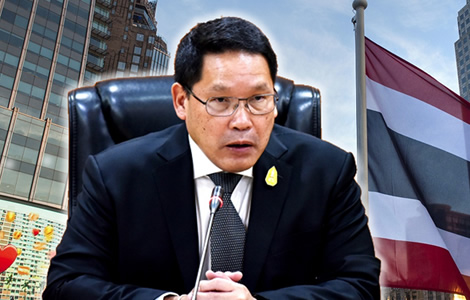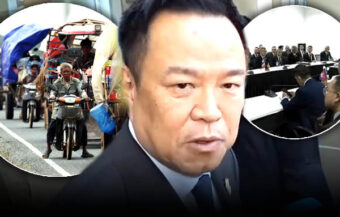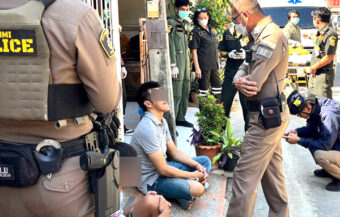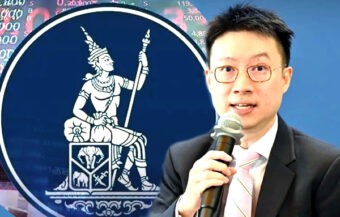As some economists talk of recession, the new government economic cabinet is hoping to launch a counter-attack on the prevailing trend in the economy this week with a ฿370 billion stimulus package which the Thai Finance Minister describes as ‘buffer’ to tide it over to better times. The plan is already being criticised by some economic thinkers as unsustainable and assumes that things both at home and abroad will not get worse.
For the first time since the economic crisis began in the middle of last year, the Thai government and economic czar Somkid Jatusripitak are looking to get ahead of the curve as economic growth slips. A ฿370 billion economic stimulus package to be discussed by the cabinet on Tuesday, would, according to Finance Minister Uttama Savanayana inject ฿200 billion into the economy between now and the end of the year. This is how the new government economic cabinet which will now meet every Friday, is planning to end the year with Thailand’s growth rate at 3% for 2019.

Thailand’s economic cabinet on Friday clarified its plan to tackle the sliding Thai economy in advance of figures out today which showed that growth in the second quarter of 2019 dipped to 2.3% from 2.8% in the first quarter. It’s the worst result in nearly five years and what is worrying senior insiders and economists is the trend and the negative external climate driving it.
Economic policy supremo Somkid chairing special economic cabinet on Fridays
The economic cabinet which is nominally headed by Prime Minister Prayuth Chan-ocha also contains the ministers for finance, industry, labour, transport, natural resources, energy, agriculture, interior, higher education, tourism and digital economy. It was clarified on Friday that the cabinet would be chaired at its weekly meetings to be held each Friday, by Deputy Prime Minister and economic policy czar, Somkid Jatusripitak.
Figures out today show growth in the second quarter falling to 2.3% from 2.8% in quarter one
The figures released today show no real surprises and in some respect are a relief as they show that despite the dramatic downturn in goods and service exports at 5.8% and 7% respectively, the economy still managed to stumble forward even at a reduced growth rate.
Seven key goals for the economic cabinet and two key reform areas as it begins work
The ministers in the new economic cabinet are reported to be focused on seven key goals including shielding the less well off, helping farming incomes, small and medium-sized industry as well as driving tourism. The other goals are to speed up public infrastructure projects and government expenditure, to boost inward investment particularly for new manufacturing concerns and to promote Thailand’s exports including agricultural products.
This will be in addition to two key reform programmes which are to restructure the public service and reform Thailand’s traditional farming production methods for a new era.
Ministers at the last meeting heard a report from the state’s top economic body
On Friday last, the mini cabinet heard a report from Thosaporn Sirisumphand of the National Economic and Social Development Council on the economic downturn. He briefed them on the latest data for Quarter 2. He blamed the trade wars, the hiatus in forming a new government after the election and the slowing global economy for the downturn in growth. He did also highlight, however, that the continuing headwinds are beginning to affect consumer and business sentiment in the kingdom.
Mr Thaosaporn expressed confidence that with the government’s proposed stimulus package coming on stream, the Thai economy could still turn in a growth rate for 2019 in the order of 3%.
Secretary to mini cabinet warns that growth will be under 3% if action is not taken
After the meeting of the economic cabinet on Friday, the secretary of the body, Kobsak Pootrakool, was more cautious. He acknowledged the news we have heard today about slower growth in the second quarter and also projected a growth rate of 3% for the full year. However, the senior official said that without the stimulus package, the chances of growth in Thailand for 2019 falling below 3% would be high.
Total stimulus package worth ฿B370 billion
The package being considered on Tuesday by the full Thai cabinet is for an injection of ฿370 billion into the Thai economy over the next 12 months. The finance minister is highlighting that, if approved, the package may see ฿200 billion in cash flow driving the economy forward in the latter half of the year.
Academics and some economists not impressed
The package of measures is already being criticized by a range of academics and economists for being simply unsustainable. One respected economic thinker last week highlighted the price guarantees mooted and supports for farmers as having the downside of conditioning them to be less competitive and more dependent on state aid. This week, Anusorn Tamajai of Rangsit University’s Business Research Centre said this: ‘Short-term spending as part of populist policies will not help much as the Thai economy is monopolised by big business.’
Plan assumes that conditions at home and abroad will not worsen further at home or abroad
The plan also assumes that market conditions both within Thailand and the world economy do not worsen further. Last week, it emerged that the Thai property development market is experiencing a sharp slowdown in business activity and a glut of properties on the market particularly in Bangkok across all sectors. The deputy chief executive of Prksa Holdings, a respected property development company listed on the SET, Supattra Paopiamsap, called on the Bank of Thailand to look at relaxing some of the lending curbs it introduced on April 1st to stimulate the sector and overall economic activity.
Two forms of aid, direct state payments and soft loan arrangements through state banks
The ฿370 billion stimulus package proposed by Finance Minister Uttama Savanayana roughly involves ฿100 billion in state handouts to lower earners, farmers and select groups in society, for instance, those caring for children and the elderly. The second element is ฿250 billion and comprises of soft loans and extensions of existing loan terms aimed at boosting the farming and small to medium-sized business sector. These loans and facilities will be tailored to the market and the Thai economy by Thailand’s state-controlled banks.
The minister said that the package aims to stimulate Thailand’s grassroots economy and act as a buffer during these testing times.
Interest rate reductions will also help a little
As well as the stimulus, Thailand’s borrowers including ordinary consumers and businesses will also get some small relief from the interest rate cut announced two weeks ago which has been universally passed on by the country’s retail banks.
Further reading:
Thailand recession fears as airline losses mount with lower tourist numbers and a strong baht
Economic stimulus ready for cabinet as Thailand braves a credit squeeze and reeling economy
Moody’s – debt is 98.5% denominated in Thai baht as two views of the economy are at odds
Thailand’s small businesses and farmers are facing a crisis. The bankers are the ones that know


















